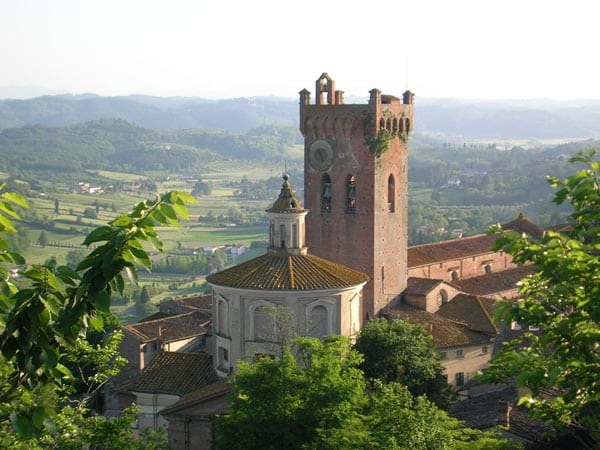Walking the Camino de Santiago, a renowned network of pilgrimage routes leading to the shrine of the apostle Saint James the Great in the cathedral of Santiago de Compostela in Galicia, Spain, is an experience that varies greatly depending on the time of year.
Each month offers a unique perspective on the landscapes and local cultures along the various Camino de Santiago routes. Here’s a month-by-month guide:
January on the Camino
- Weather: The winter landscape is typically cold, especially in mountainous regions. Temperatures can drop significantly, and snow is common in certain areas, creating a picturesque but challenging environment for pilgrims. Warm clothing and proper gear are essential to navigate the icy paths and ensure a safe journey. Despite the cold, the winter landscape offers a unique and serene beauty, with fewer pilgrims and a tranquil atmosphere.
- Crowds: There are very few pilgrims, offering a uniquely solitary experience. The typically bustling routes are much quieter, allowing for a more introspective and personal journey. This solitude allows one to connect deeply with the path and the natural surroundings without the usual crowds. You can enjoy the serene beauty of the Camino in winter, experiencing a different, more peaceful side of this historic pilgrimage.
- Considerations: Shorter days mean less daylight for walking.
- Route Recommendation: The Camino Invierno is lesser-known and avoids the mountainous terrain of the Camino Francés during harsh winters. It takes pilgrims the last 100km from Monforte de Lemos, the capital of the Ribeira Sacra wine-making region, to Santiago de Compostela.

February on the Camino
- Weather: It remains cold, but you may notice the first signs of spring emerging. The weather can be variable, with rain and snow possible, especially in higher elevations. Pilgrims should be prepared for wet and chilly conditions, ensuring they have appropriate gear to stay dry and warm. Despite the lingering winter chill, the occasional hints of budding flowers and milder days provide a glimpse of the warmer months ahead, adding a touch of anticipation and renewal to the journey.
- Crowds: There is usually a slight increase in pilgrims compared to January, but it remains relatively quiet. The paths are still far from crowded, offering a peaceful and reflective experience. This time of year allows for a personal connection with the journey without the hustle and bustle of peak seasons. The solitude enhances the tranquillity of the pilgrimage, providing ample space to enjoy the natural beauty and serenity of the route.
- Considerations: Some accommodations may be closed in the off-season.
- Route Recommendation: The Camino Portugués has a relatively milder climate, especially in southern Portugal and Spain. This route was traditionally taken by pilgrims coming from Portugal, mainly from Lisbon and Porto.
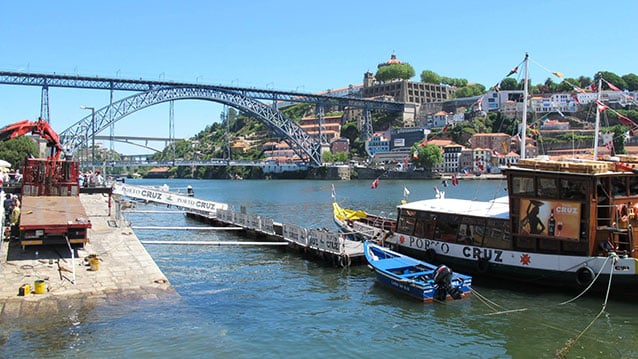
March on the Camino
- Weather: The onset of spring brings milder temperatures and a refreshing change from the winter chill. However, the weather can be quite unpredictable during this month. Pilgrims may experience a mix of sunny days, sudden rain showers, and occasional cold snaps. It’s essential to pack versatile clothing to adapt to these changing conditions. The blossoming flowers, greener landscapes, and milder weather make March a beautiful but varied time to walk the Camino.
- Crowds: The number of pilgrims on the Camino de Santiago increases, particularly as Easter approaches. The warmer weather and the festive season draw more people to the trail, creating a livelier atmosphere than the quieter winter months. While the paths are still not as crowded as during the peak summer season, you’ll notice a significant uptick in fellow walkers, adding a sense of community and shared purpose to the journey. This blend of solitude and camaraderie makes March a dynamic and enriching time to experience the Camino.
- Considerations: A good time for those seeking solitude but with better weather conditions.
- Route Recommendation: The Camino del Norte (the Northern Way) offers breathtaking coastal views of Spain’s northern shoreline with the onset of spring. San Sebastián, or Donostia, is just one of the cities along this route, which is a paradise for food enthusiasts with its many Michelin-starred restaurants.
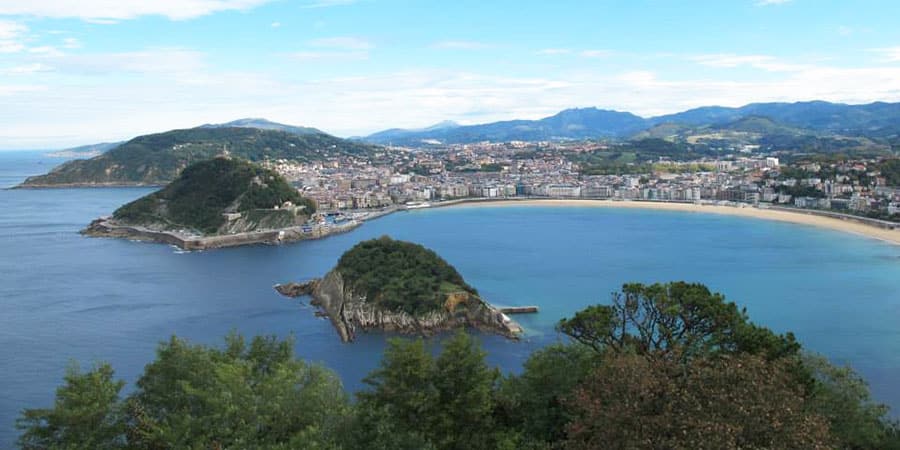
April on the Camino
- Weather: April typically brings mild temperatures, making it comfortable to walk. However, the month is well-known for its frequent rain, often called “April showers.” Pilgrims should be prepared for wet conditions, as these showers can sometimes be sudden and heavy. Waterproof clothing and sturdy, water-resistant footwear are essential. Despite the rain, the landscape blossoms in April with lush greenery and vibrant flowers, enhancing the beauty and freshness of the Camino experience.
- Crowds: The number of pilgrims on the Camino de Santiago significantly increases, especially around Easter. This religious holiday attracts many people seeking a meaningful pilgrimage experience, resulting in busier trails and fuller accommodations. The influx of pilgrims during this time adds a festive and communal atmosphere to the Camino. Despite the increased crowds, the shared spirit of devotion and camaraderie makes Easter a special and enriching time to embark on this historic journey.
- Considerations: Wildflowers and lush landscapes make this a visually appealing time.
- Route Recommendation: Camino Francés is the most popular route and offers an immersive experience of Spain’s vibrant Easter festivities, set against spring’s awakening landscape. It is a uniquely cultural and visually appealing pilgrimage journey.
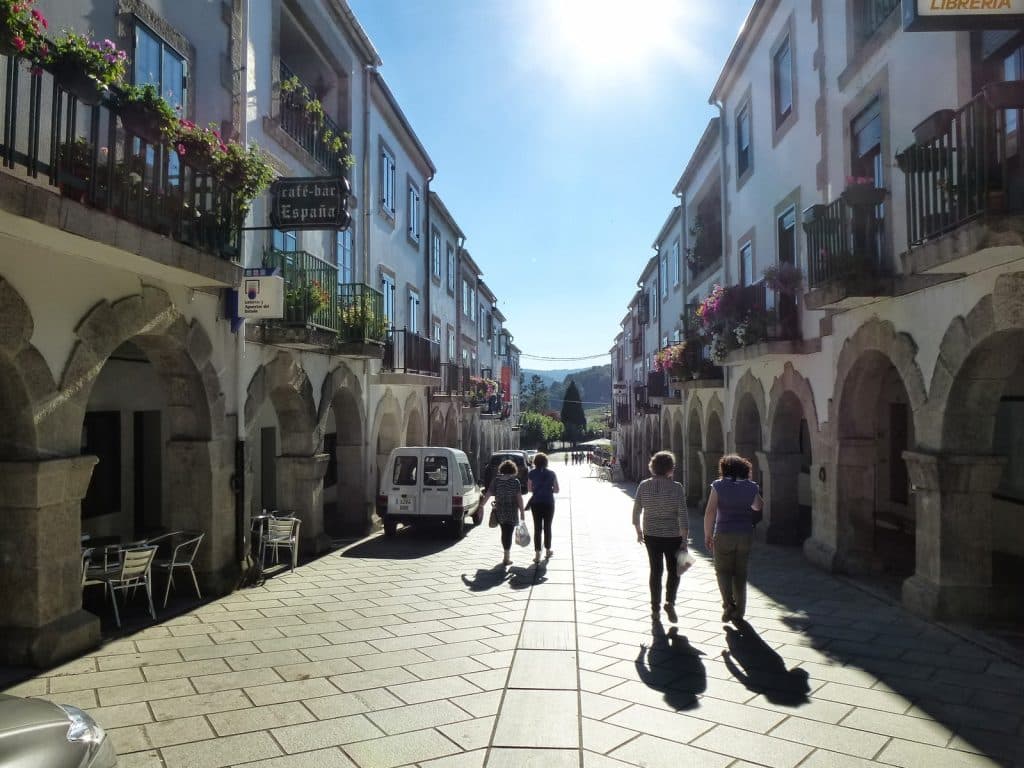
May on the Camino
- Weather: It is characterised by warm and pleasant weather, making it one of the best pilgrimage months. Daytime temperatures are comfortable, perfect for walking without the extremes of heat or cold. The consistent warmth is complemented by longer daylight hours, providing ample time to cover distances and enjoy the scenery. While rain is less frequent than in earlier Spring months, preparing for occasional showers is still wise. The blooming landscapes and vibrant colours of nature further enhance the experience, making May a delightful time to walk the Camino.
- Crowds: A steady flow of pilgrims creates a lively but not overly crowded atmosphere. This balance allows for a sociable journey where you can meet fellow walkers without the congestion typical of the peak summer months. The steady crowds provide a sense of community and shared purpose, enhancing the overall experience. With the beautiful weather and the right mix of companionship and tranquillity, May is an ideal time for a rewarding pilgrimage.
- Considerations: Ideal for enjoying the full bloom of Spring.
- Route Recommendation: In May, the Camino Primitivo presents a rewarding challenge with its stunning landscapes. It offers a tranquil experience as it’s less crowded compared to other routes, perfect for those seeking solitude amidst natural beauty.
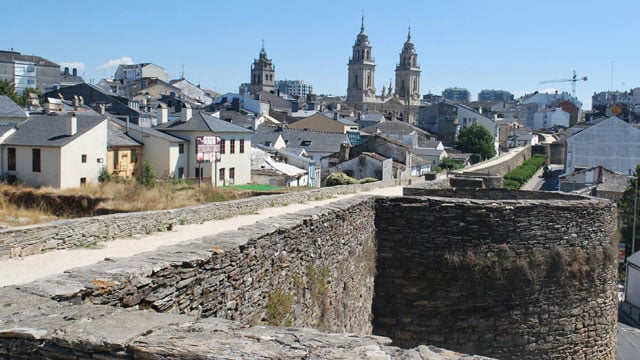
June on the Camino
- Weather: Marks the beginning of Summer, with warm and sunny weather, making it an inviting time for pilgrims. Daytime temperatures are typically pleasant, often accompanied by clear blue skies, perfect for long days of walking. The early summer warmth is generally comfortable but has not yet reached the intense midsummer heat. However, it’s still wise to carry sun protection, such as sunscreen and a hat, to guard against the sun’s rays. The landscape is lush and vibrant, adding to the scenic beauty of the journey. Overall, June offers an ideal climate for enjoying the Camino.
- Crowds: The number of pilgrims steadily increases throughout the month. By the end of June, you will notice a significant uptick in the volume of walkers, as many people take advantage of the favourable weather and the onset of summer holidays. This period marks a vibrant and bustling time on the Camino, with more pilgrims on the trails and in the accommodations. Despite the growing crowds, the shared enthusiasm and spirit of the journey enhance the sense of community and camaraderie. Walking the Camino in June offers the perfect blend of lively social interaction and the natural beauty of early summer.
- Considerations: Longer days allow for more extended walking hours.
- Route Recommendation: The Via Francigena, a storied pilgrimage trail from Canterbury to Rome, spans diverse terrains, including Tuscany’s hills and the Swiss Alps. In June, its path blossoms vibrantly, showcasing multiple European nations’ distinct natural and cultural splendours.
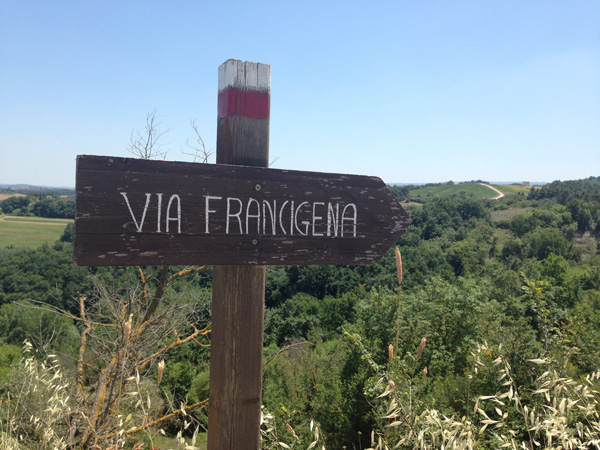
July on the Camino
- Weather: Characterised by hot weather, especially in the Meseta, the central plateau of Spain. Temperatures often soar, making it one of the hottest months for pilgrims. The heat can be intense, particularly during midday, and the wide-open, flat expanses of the Meseta offer little shade. It’s crucial to start walking early in the morning to avoid the peak heat and to stay well-hydrated throughout the day. Sunscreen, hats, and light, breathable clothing are essential to protect against the strong sun. Despite the heat, the long days and clear skies contribute to the unique and memorable experience of walking the Camino in July.
- Crowds: One of the busiest months on the Camino de Santiago, with a significant influx of pilgrims worldwide. Combining Summer holidays and favourable weather draws many to the trail, creating a lively and bustling atmosphere. Accommodations can fill up quickly, and popular routes, especially the Camino Francés, can be crowded. Despite the larger numbers, the heightened activity adds to the festive and communal spirit of the pilgrimage. Meeting fellow pilgrims from diverse backgrounds and sharing the journey makes July an exciting and socially enriching time to walk the Camino.
- Considerations: Festivals like Saint James Day (July 25) add to the experience.
- Route Recommendation: The Camino Inglés, historically favoured by Irish and British pilgrims, is ideal for its shorter length, suiting those with limited time and preferring minimal exposure to the intense summer heat.

August on the Camino
- Weather: Peak summer heat, which can pose significant challenges for walking. Temperatures often reach their highest levels of the year, making the midday sun particularly intense. The heat can be draining and requires careful planning to manage effectively. Pilgrims are advised to start their walks very early in the morning to avoid the worst of the heat, take frequent breaks in the shade, and stay well-hydrated by carrying plenty of water. Lightweight, breathable clothing and protective gear like hats and sunscreen are essential. Despite the challenging conditions, the vibrant summer landscapes and long daylight hours offer a unique and rewarding experience for those prepared to handle the heat.
- Crowds: Peak season on the Camino de Santiago, bustling with activity as many European holidaymakers take advantage of their summer vacations. This influx of pilgrims makes it one of the most crowded times of the year. Popular routes, especially the Camino Francés, are teeming with walkers, leading to a vibrant and dynamic atmosphere. Accommodations and services along the trail can be in high demand, so booking in advance is often necessary. Despite the crowded conditions, the lively spirit and camaraderie among pilgrims create a unique and festive environment. The diverse mix of people and cultures enhances the sense of community and shared purpose, making August an exciting and memorable time to experience the Camino.
- Considerations: Early starts are recommended to avoid the midday sun.
- Route Recommendation: The Camino Finisterre, stretching from Santiago to Muxia on the coast, is recommended for its refreshing coastal breezes. These breezes offer a cooler respite during the summer’s peak heat and enhance the pilgrimage’s comfort.
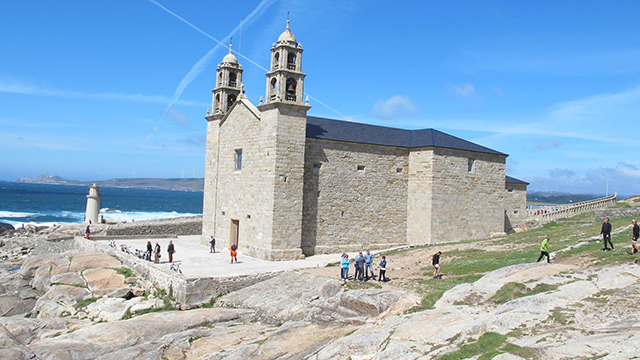
September on the Camino
- Weather: The month begins warm, with lingering summer heat, but gradually cools down as autumn approaches. Midday temperatures can still be quite hot early in the month, so staying hydrated and using sun protection is important. As the month progresses, temperatures become more moderate and comfortable for walking. By late September, you’ll experience cooler mornings and evenings, offering a pleasant mix of summer warmth and autumn freshness, perfect for enjoying the changing scenery.
- Crowds: It starts busy as many pilgrims take advantage of the lingering summer weather and the end of the holiday season. Many walkers are seen in the early part of the month, creating a lively and sociable atmosphere. However, as September progresses and the summer holidays end, the crowds begin to thin out, offering a more tranquil and relaxed experience. This gradual decrease in crowd levels makes late September appealing for those seeking a quieter pilgrimage.
- Considerations: Harvest season brings vibrant activity in rural areas.
- Route Recommendation: Camino Portugués Coastal from Porto to Santiago offers a scenic, rural alternative to the Camino Francés, ideal for pilgrims seeking a less-travelled coastal path on the Camino de Santiago.
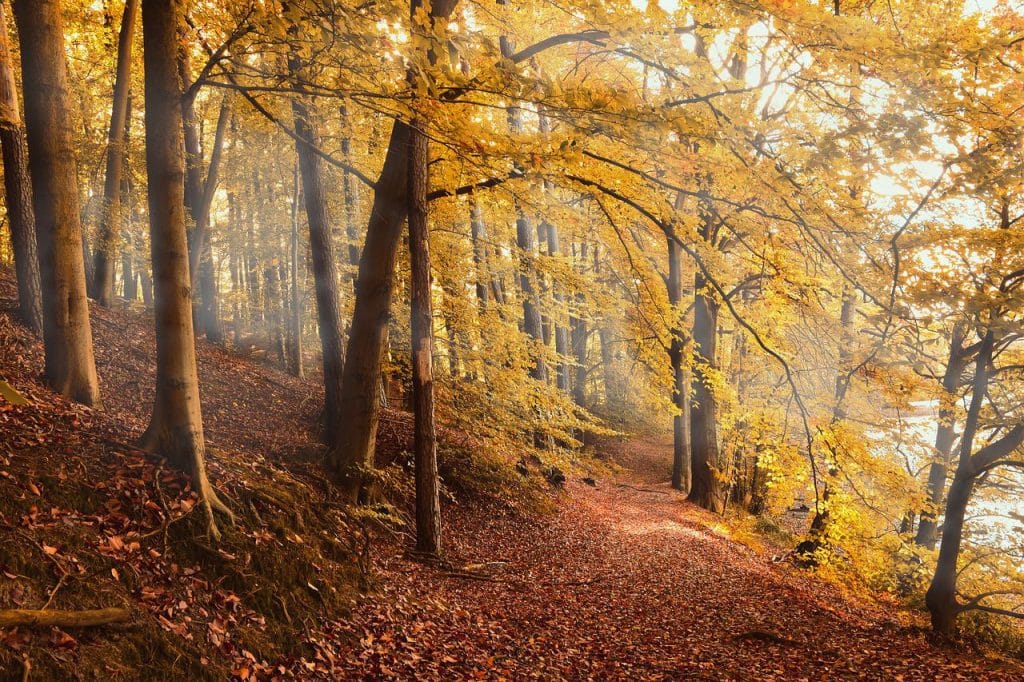
October on the Camino
- Weather: Brings cooler temperatures, making for comfortable walking conditions. However, there is an increased chance of rain, so pilgrims should be prepared with waterproof gear and layered clothing to stay warm and dry. The landscape is adorned with stunning autumn colours as the foliage transitions to vibrant shades of red, orange, and yellow. These autumnal hues create a picturesque and serene environment, enhancing the natural beauty of the Camino and making October a visually rewarding time to undertake the pilgrimage.
- Crowds: Fewer pilgrims, resulting in a quieter and more peaceful walking experience. The trails are less crowded, allowing for more personal reflection and a deeper connection with the journey. With fewer people, accommodations are easier to find, and the atmosphere is more serene. This reduced foot traffic provides an opportunity to enjoy the tranquil beauty of the autumn landscape and the unique camaraderie with the fellow pilgrims you encounter, making October an ideal time for those seeking a more introspective pilgrimage.
- Considerations: Some accommodations begin to close for the off-season.
- Route Recommendation: In October, the Camino Francés shines as the quintessential route, offering a rich tapestry of cultural experiences amidst the stunning autumnal beauty, making it an ideal choice for a deeply immersive and visually captivating pilgrimage.
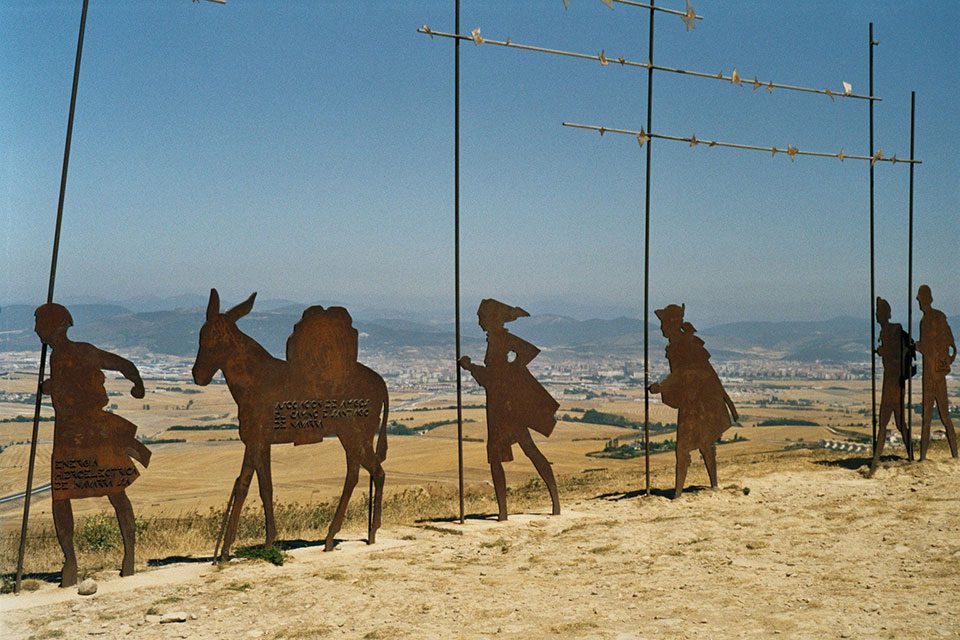
November on the Camino
- Weather: Characterised by cold weather, especially in the northern regions. Temperatures can drop significantly, making warm clothing essential for comfort and safety. Additionally, rain is more likely, so waterproof gear and sturdy, water-resistant footwear are crucial to stay dry and avoid discomfort. The combination of cold and wet conditions can make the journey more challenging. Still, the quieter paths and the stark beauty of the late autumn landscape offer a unique and rewarding pilgrimage experience.
- Crowds: Low numbers of pilgrims, creating an atmosphere of solitude and tranquillity. The reduced crowds allow for a more introspective and reflective journey as you walk through serene landscapes with fewer distractions. This quieter season provides ample opportunity to connect deeply with the path, nature, and your thoughts. The peaceful environment fosters a sense of personal discovery and contemplation, making November an ideal time for those seeking a more meditative and solitary pilgrimage experience.
- Considerations: Shorter days and potentially challenging weather.
- Route Recommendation: Via de la Plata offers a milder oceanic climate, providing a pleasant alternative to the cooler inland temperatures and enhancing the comfort and enjoyment of the pilgrimage during this time.
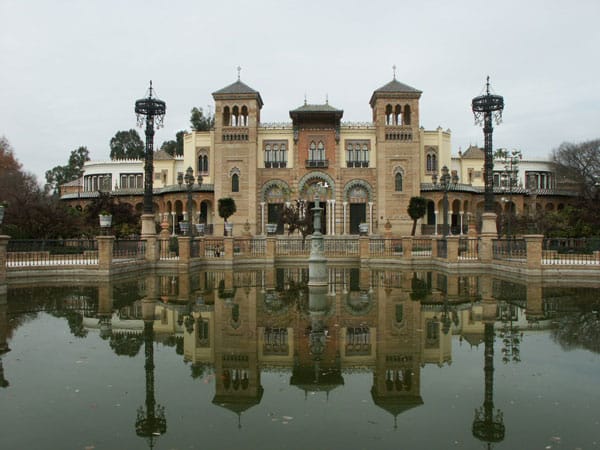
December on the Camino
- Weather: Characterised by cold weather, with significant temperature drops and possible snowfall in higher-altitude areas like the Pyrenees. Pilgrims need warm clothing, insulated gear, and appropriate footwear to handle icy or snowy paths. The winter conditions create a serene and picturesque landscape, offering a unique and rewarding experience for those well-prepared for the challenges.
- Crowds: There are very few pilgrims, much like in January. This low number of walkers creates an exceptionally quiet and peaceful atmosphere on the trail. With the paths largely to yourself, you can enjoy a deeply personal and introspective journey, free from the hustle and bustle of busier months. The serene environment allows for a greater connection with nature and the spiritual aspects of the pilgrimage, making December an ideal time for those seeking solitude and reflection.
- Considerations: A unique, serene experience but with limited daylight and services.
- Route Recommendation: Camino Francés last 100km from Sarria to Santiago is the most traditional route and offers historical significance which you can enjoy in its most tranquil and introspective state.
Things to Consider:
- Weather Variability: Weather on the Camino can be unpredictable, so check forecasts and be prepared for changes.
- Accommodation: Availability may vary, especially in the off-peak months. Accommodations along the Camino de Santiago with unique features and amenities cater to diverse comfort levels and budgets, significantly enhancing the overall pilgrimage experience with their varied offerings.
- Festivals and Local Events: Whether you’re after food, music, sightseeing or religious festivals, there’s an abundance of events taking place along the various Camino de Santiago routes throughout the year.
- Physical Challenge: Select a route that aligns with your physical abilities and experience, as some Camino paths are more challenging. For guidance, refer to our Camino Beginners Guide or Camino Fitness eBooks, which offer insights to help you make an informed choice.
General Tips:
- Northern Routes: Coastal routes like the Camino del Norte have milder temperatures in summer but can be wetter.
- Southern Routes: Routes like the Via de la Plata can be extremely hot in summer.
- Mountain Passes: Snow can block certain mountainous sections in winter and early spring.
The best time to walk the Camino depends on personal preferences regarding weather, crowds, and the sort of experience you’re looking for. Late spring (May and June) and early autumn (September and October) are generally considered ideal for their balance of pleasant weather and moderate crowds. However, every season has its unique charm and challenges.
Contact us for more information.
